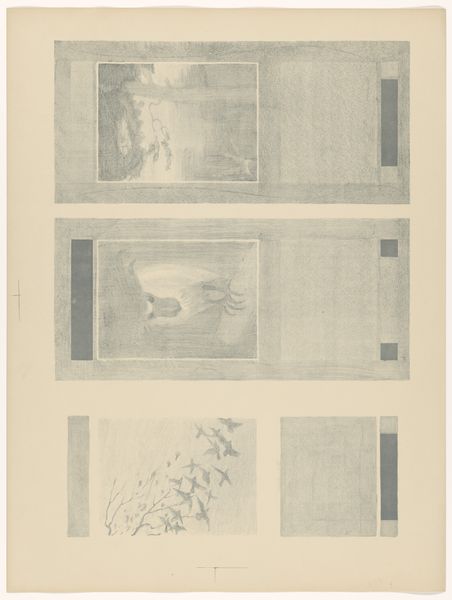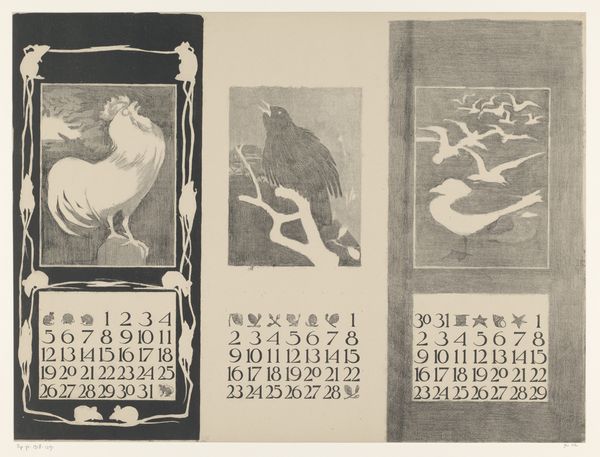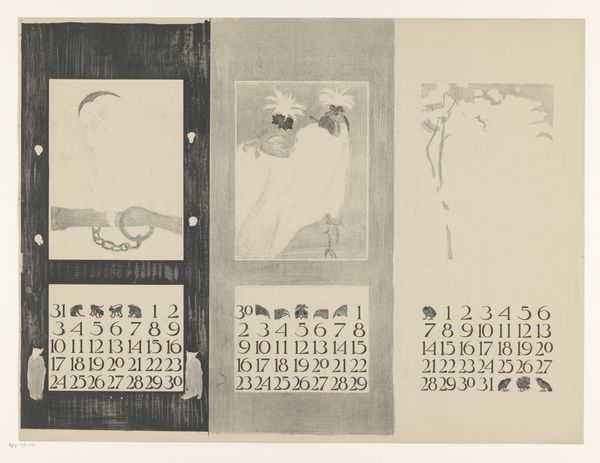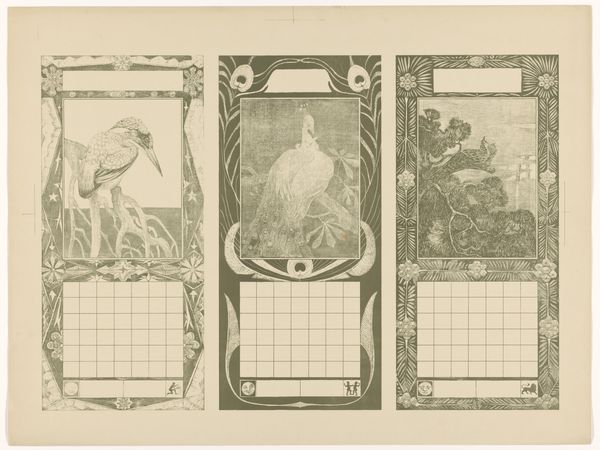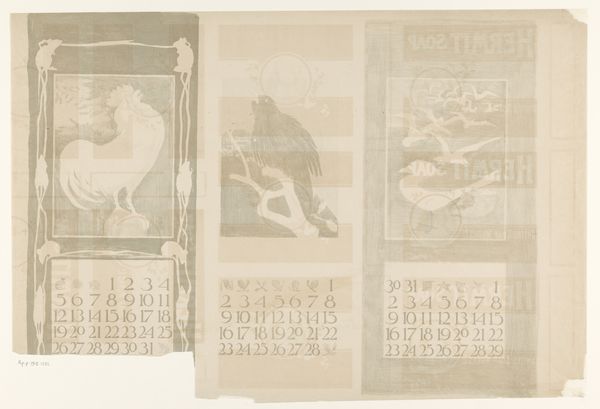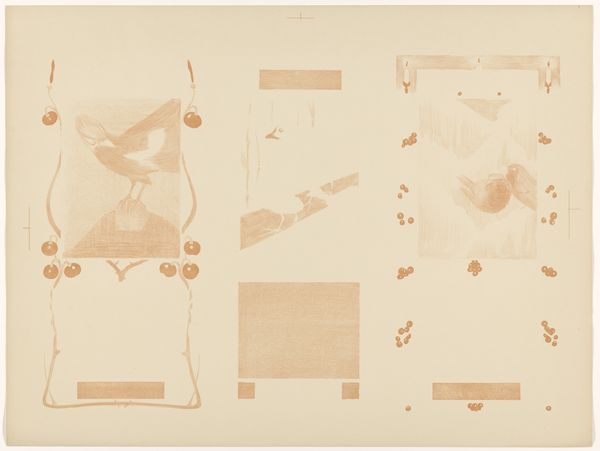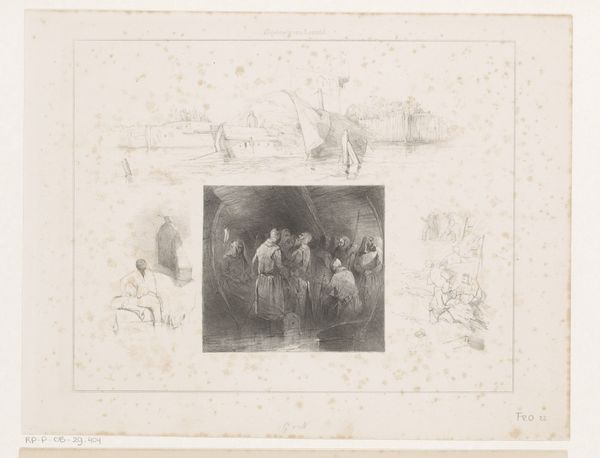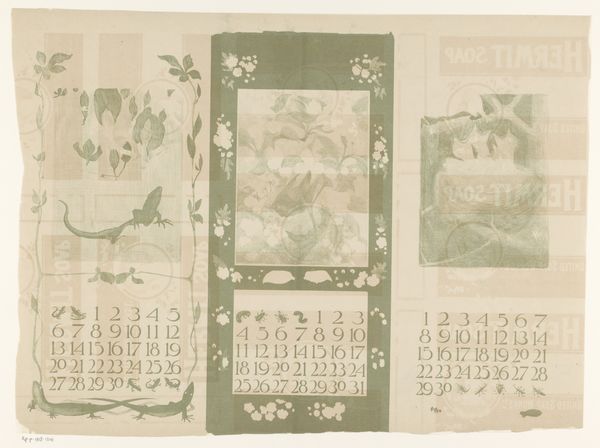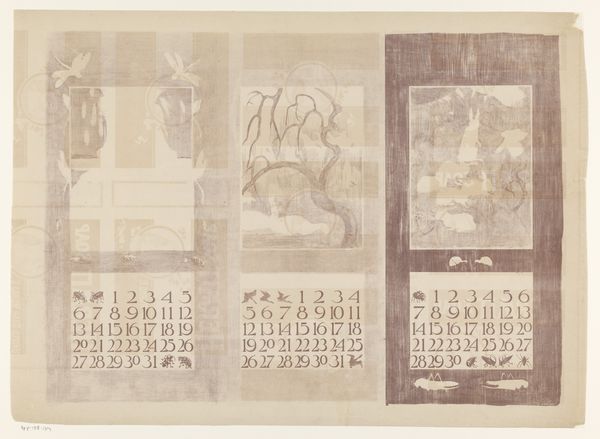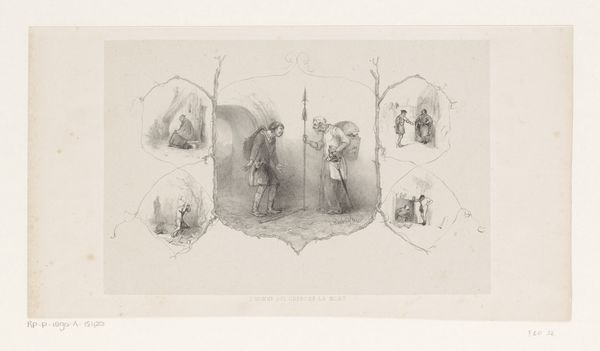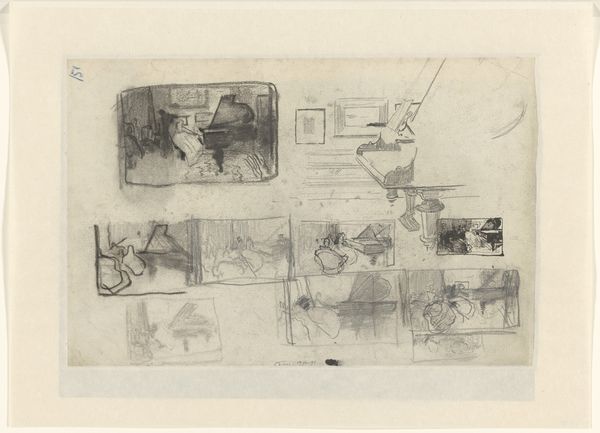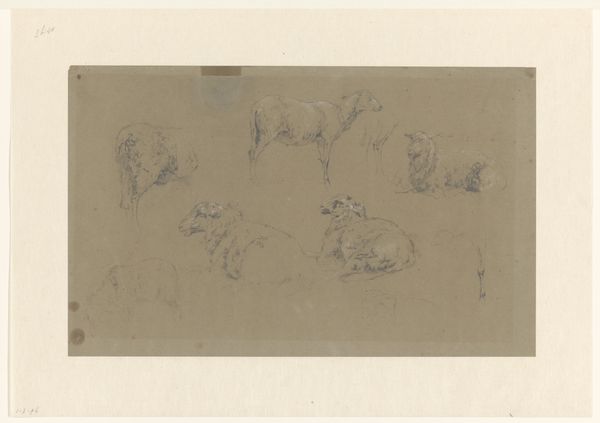
drawing, lithograph, print
#
drawing
#
art-nouveau
#
lithograph
# print
#
asian-art
#
old engraving style
#
landscape
#
archive photography
#
historical photography
#
geometric
#
line
Dimensions: height 733 mm, width 553 mm
Copyright: Rijks Museum: Open Domain
Curator: We're standing before Theo van Hoytema's "Kalenders voor januari, mei en juli 1904," a print from the early 20th century held in the Rijksmuseum collection. Editor: Immediately, what strikes me is the delicate balance between meticulous line work and what feels like inherent flatness. The compositions have this sort of muted, almost ethereal quality. Curator: Precisely. Hoytema, working within the Art Nouveau movement, has given careful attention to linear structure and the interplay of form, simplifying natural elements into geometric forms that resonate with Japanese art traditions. Editor: Considering Hoytema’s history, I’m drawn to think about printmaking and how his lithographic work connected to larger processes of calendar production for, maybe, domestic spaces? It almost brings a sense of intimacy to industrial crafting. Curator: An astute observation. Beyond the utilitarian aspect, observe how he manipulates the graphic elements: stylized flora and fauna presented almost as symbolic codes, their stark presentation on the paper surface revealing the impact of Symbolist aesthetic approaches. Editor: Yes, and thinking about lithography, I am wondering about the possibilities within print production that maybe expanded these calendars to wider audiences, marking cycles for people? It feels particularly intriguing to consider the calendars for January, May, and July, when labor conditions shifted. Curator: Indeed. We may find within his precise linear choices something more deliberate, a means of refining lived, experienced reality, where production means aesthetic value. It reveals the artist's dedication to merging form and concept through compositional restraint and reduction. Editor: In terms of labor and industrial processes, and the materiality of how time becomes captured for daily practices, "Kalenders voor januari, mei en juli 1904" encapsulates how cultural objects gain meaning by engaging mass production techniques to create art that everyone can understand and integrate into everyday life. Curator: Your insight provides an enriching lens, shifting my focus from the image's surface to engage the economic implications, offering deeper insight than initially perceived. Editor: And seeing it that way brings forth how artistic creation transforms into a dialogue regarding society, technology, and culture.
Comments
No comments
Be the first to comment and join the conversation on the ultimate creative platform.

